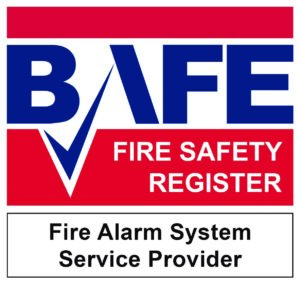Life Cycle Costs for Fire Alarm Systems
When selecting a fire detection and alarm system, users should bear in mind the ‘whole life’ costs including its maintenance and any future upgrades, not just the initial capital outlay. In every building’s lifetime there are times when decisions need to be made regarding fire protection; whether a system is being installed as part of a new build or the current protection needs upgrading or replacing.
When selecting a fire detection system one important fact is often missed, and that is that the initial cost of purchase only represents a small proportion of the true cost of the system throughout its lifetime. The cheapest product on the shelf may not deliver best value throughout the system’s life.
There are a number of factors associated with fire detection that should be taken into consideration at the purchasing stage in order to determine the total lifetime cost, such as maintenance and upgrade of the system.
Whichever system is chosen there are a number of questions that will need to be asked in order to establish these lifetime costs, such as what is the manufacturer’s upgrade policy and will they maintain backwards and forwards compatibility? What are the maintenance implications for this system – can work be carried out by a competent third party?
Intelligent fire detection system devices communicate with each other by means of a protocol. For those manufacturers who offer both panels and devices, there is no need to disclose the nature of their protocol to anyone else because they offer a complete system. The protocol is therefore said to be ‘closed’.
There are also manufacturers who do not make all the fire system components themselves. Some manufacturers produce detectors but does not make its own control panels. In order to encourage independent manufacturers to design and develop control panels that are fully compatible, the detector manufacturer publishes and shares its protocol. Since all the details of the protocol are disclosed, it is referred to as an ‘open’ protocol.
Choosing a closed protocol ties the user to a single manufacturer for the lifetime of the system. It is therefore worth checking whether this commitment comes with any advantages for the user, and if the manufacturer is a well-established company. Check how long the product range is going to be supported; otherwise, maintenance or replacement may be costly in later years. It could even involve premature replacement of the entire system if it becomes obsolete before the end of its design life.
An open protocol system avoids many of these potential pitfalls because it is supported by several manufacturers. If one manufacturer drops out, compatible products will still be available from others using the same protocol. An open protocol system is therefore also likely to offer greater choice, so upgrading or replacing products is easy.
When it comes to a system which is designed to save lives such as fire detection, it is vital that the correct decision is made. If the wrong system has been chosen this could lead to the financial cost of replacement or, in the worst-case scenario, the ultimate cost – loss of life. There are a series of questions that should be asked when choosing fire detection in order to ensure that the right system has been chosen for the job.
The first of these questions should be whether you are comparing like for like? If one system is cheaper, consideration should be made as to why this is so. It may be that one manufacturer includes a customer support programme within their system cost that makes it appear more expensive, whereas another does not. Also make sure that the systems are offering comparable features so you are not comparing the ‘executive model’ with a basic version.
As fire protection is safety-critical, it is important that all devices are certified to meet both national and international standards, providing confidence in the system. Companies can spend thousands of pounds going through independent third-party certification procedures to ensure that their products meet quality standards, so you should ask to see them.
By the time that you find out that the chosen fire detection system was not certified, but rather designed to, or tested to meet certain standards, it may be too late. A fire detection system that is not certified to meet the appropriate standards could also leave the user open to enforcement action or even prosecution.
Another hidden aspect of system cost can be where responsibility lies if the fire detection fails. Agreeing beforehand who takes the responsibility and under what circumstances can save a significant amount of time and cost if something goes wrong. It is therefore worth checking the warranty that is provided by the manufacturer and if any onerous conditions are attached to it.
Even the best-installed and best-in-class equipment deteriorates over time, so, like any other essential plant, the fire detection system needs to be regularly tested and reviewed. A service and maintenance agreement that extends over the overall life expectancy of the equipment will minimise the risk and likelihood of fire detection failure and should be budgeted for to obtain best value.



